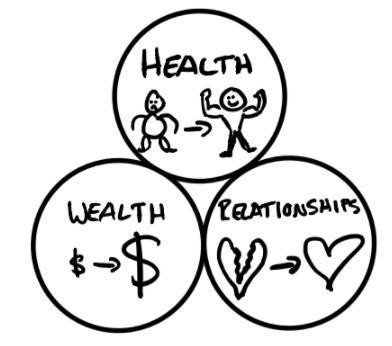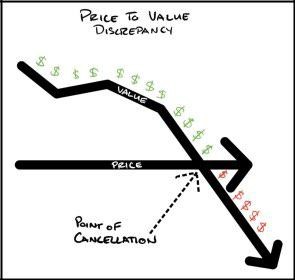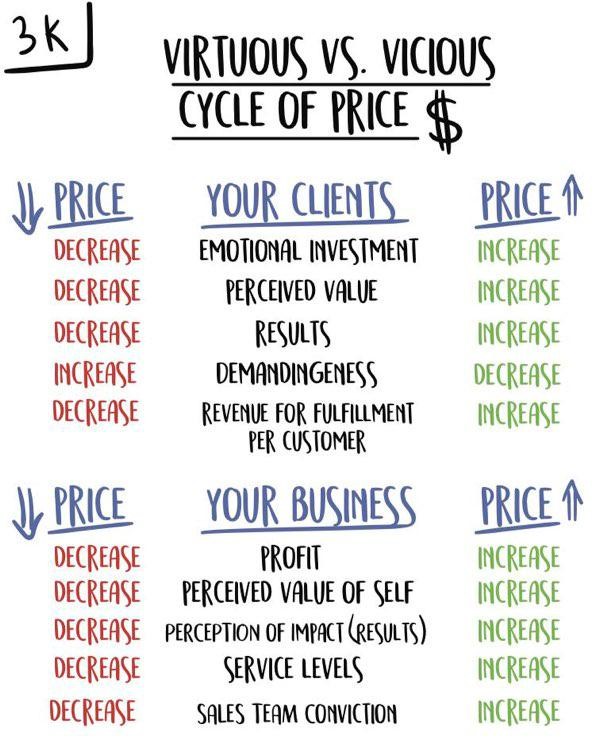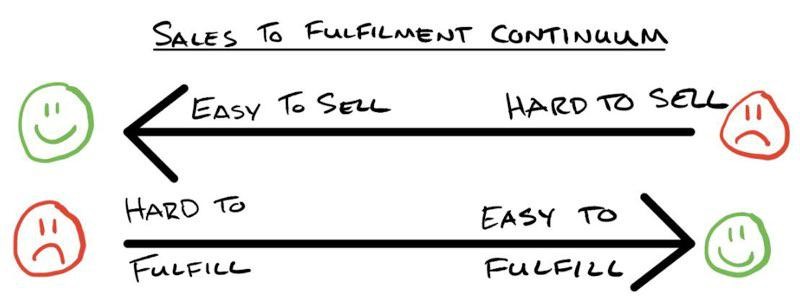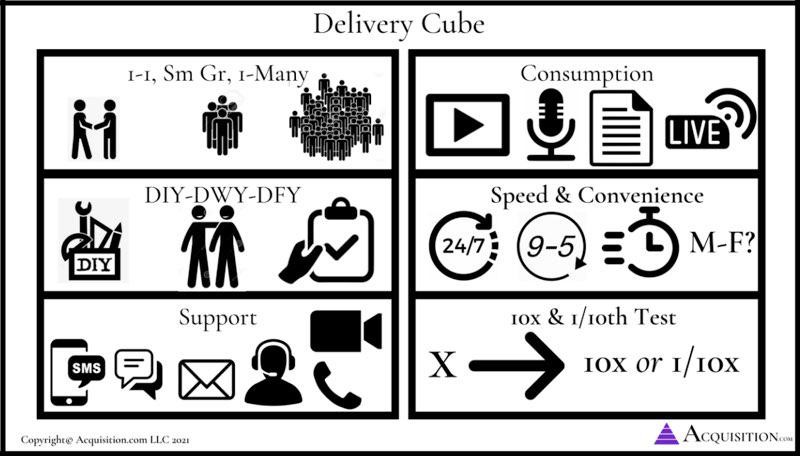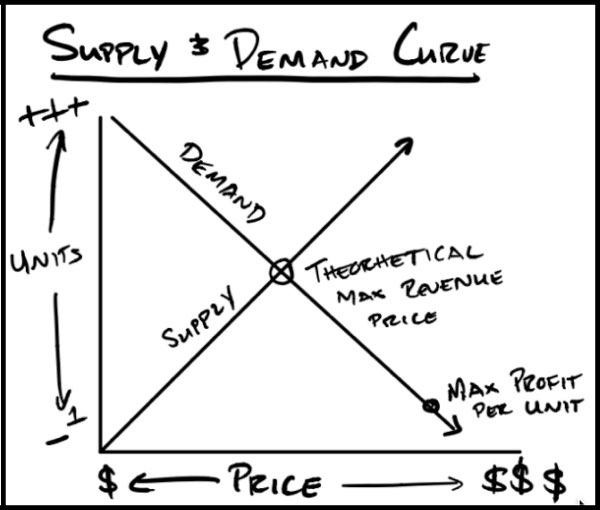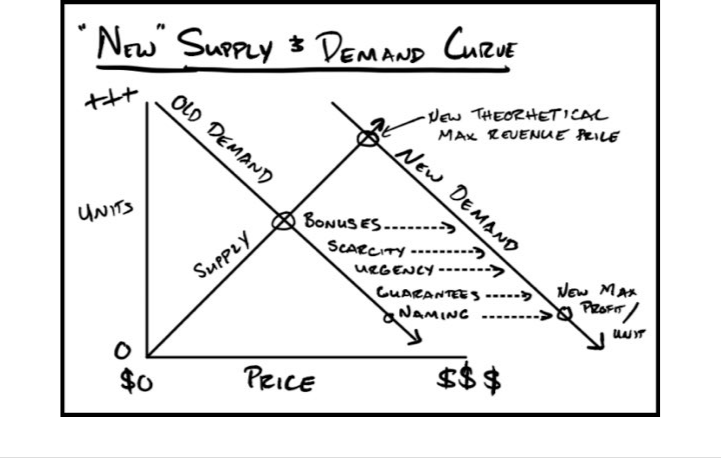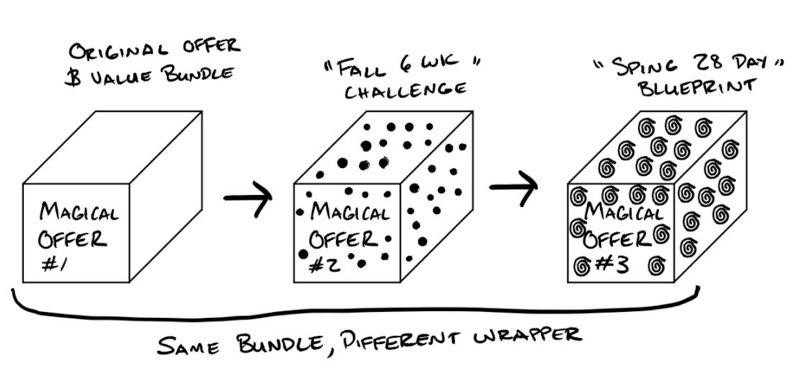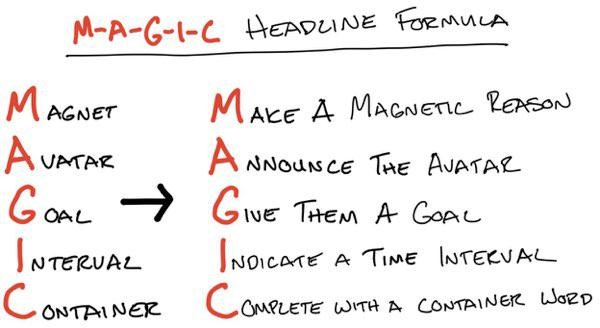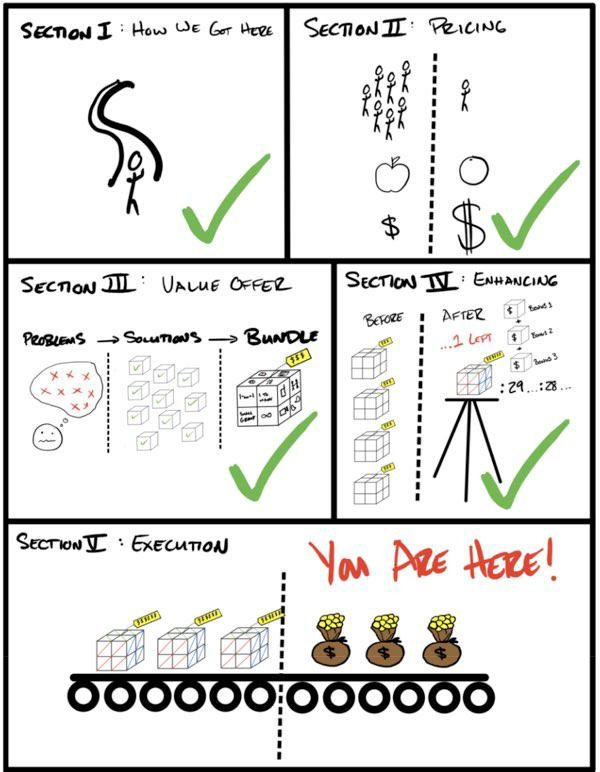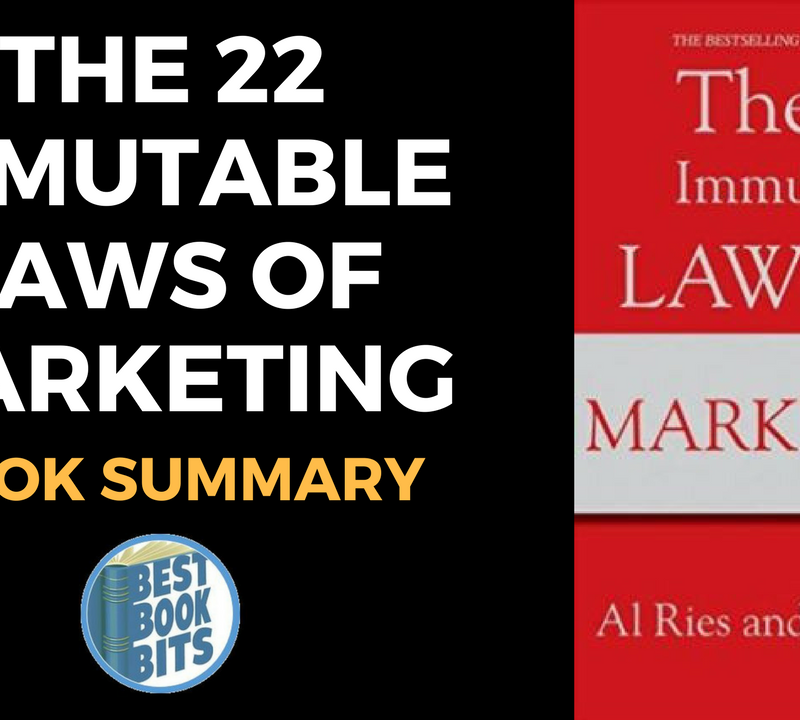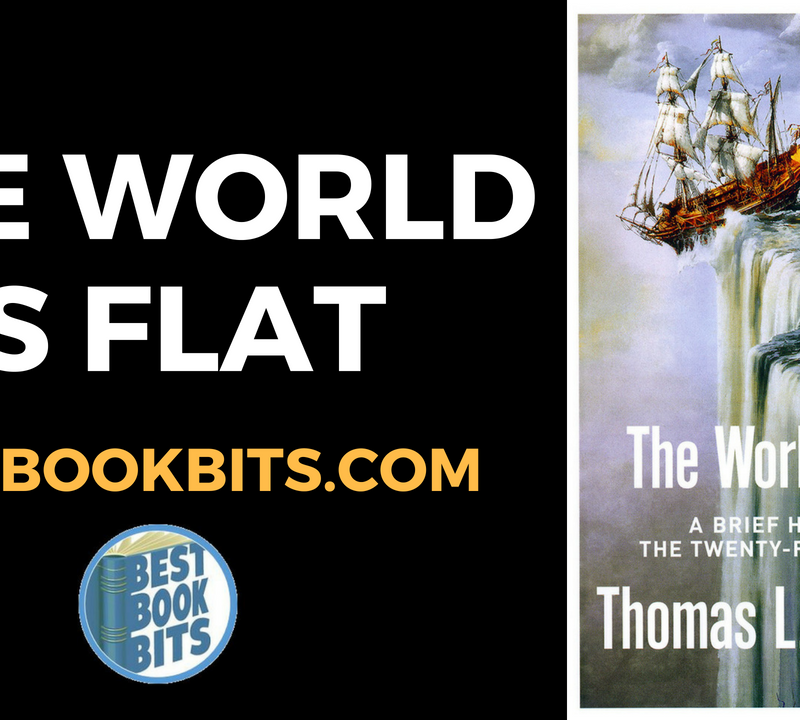< DOWNLOAD THIS SUMMARY IN PDF HERE >
< FOLLOW US HERE > |YouTube |Spotify | Instagram | Facebook | Newsletter | Website
I took home more in a year than the CEOs of McDonalds, IKEA, Ford, Motorola, and Yahoo….combined….as a kid in my twenties….using the $100M Offer method. It works. And it will work for you.
Not that long ago though, my business had gotten so bad that I literally couldn’t even give my services away for free. At the end of each month, I would look at my bank account hoping to see progress (but there wasn’t). I knew something had to change…but what?
Over the next 48 months, I went from losing money to making $36 for every $1 spent. In that time period, we generated over $120,000,000 across four different industries: service, ecommerce, software, and brick & mortar.
But, unlike everyone else, we didn’t have great funnels, great ads, or a wealthy niche. In fact, we didn’t even send emails until we had crossed $50M in sales(!). Instead, we were able to do this one thing really well….we created offers so good, people felt stupid saying no.
Here’s exactly what this book will show you how to do:
- How To Charge A Lot More Than You Currently Are…
- How To Make Your Product So Good, Prospects Find A Way To Pay For It
- How To Enhance Your Offer So Much, Prospects Buy Without Hesitating
The methods contained within this book are so simple, so instantaneous, and so effective, it’s as if they work by magic. If you implement even one tactic in this book, you’ll see the change in your prospects’ demeanor. And you’ll know the $100M Offer method worked when you start hearing “What do I need to do to move forward?” …before you even ask for the sale.
“Outsized returns often come from betting against conventional wisdom, and conventional wisdom is usually right. Given a 10 percent chance of a 100 times payoff, you should take that bet every time. But you’re still going to be wrong nine times out of ten . . . We all know that if you swing for the fences, you’re going to strike out a lot, but you’re also going to hit some home runs. The difference between baseball and business, however, is that baseball has a truncated outcome distribution. When you swing, no matter how well you connect with the ball, the most runs you can get is four. In business, every once in a while, when you step up to the plate, you can score 1,000 runs. This long-tailed distribution of returns is why it’s important to be bold. Big winners pay for so many experiments.” — JEFF BEZOS
As entrepreneurs, we make bets everyday. We are gamblers ― gambling our hard-earned money on labor, inventory, rent, marketing, etc., all with the hopes of a higher pay out. Oftentimes, we lose. But, sometimes, we win and win BIG.
However, there is a difference between gambling in business and gambling in a casino. In a casino, the odds are stacked against you. With skill, you can improve them, but never beat them. In contrast, in business, you can improve your skills to shift the odds in your favor. Simply stated, with enough skill, you can become the house.
the offer: the starting point of any conversation to initiate a transaction with a customer. What you are literally providing them in exchange for their money. That’s where it all begins.
This book is about how to make profitable offers. Specifically, how to reliably turn advertising dollars into (enormous) profits using a combination of pricing, value, guarantees, and naming strategies. I call the proper combination of these components: a Grand Slam Offer.
The greatest hitters of all time also have many strike outs, just as there are many failed offers in the track record of great marketers. We learn skills through failure and practice. We do this knowing that nine out of ten times we will be wrong. We still act boldly, hoping for that offer we connect with so well that it results in our big payoff.
The good news is that in business, you only need to hit one Grand Slam Offer to retire forever.
Pro Tip: Faster, Deeper Learning By Reading & Listening At Same Time
Here’s a life hack I discovered a long time ago….If you listen to the audiobookwhile reading the ebook or physical book you will increase your reading speed and retain more information. The contents are being stored in more places in your brain.
SECTION I: HOW WE GOT HERE
THE UGLY TRUTH
1: HOW WE GOT HERE
“Magic will find those with pure hearts, even when all seems lost.” — MORGAN RHODES
Gym Launch
In late 2016, after successfully running his own chain of gyms, Alex Hormozi, an aspiring entrepreneur, decided to travel across the US to pursue his new business idea, Gym Launch. Alex wanted to build on what he learned in promoting and filling his gyms up with clients. Gym Launch entailed teaching gyms how to make great offers and recruit the largest number of clients possible.
Alex sold all his gyms to get enough capital to launch his new sales business. But the money ended up being stolen by his new business partner, leaving him with only $300 in his bank account. Yet he did not allow anything to hold him back from executing his plan. To fund his venture, he used his credit card, which had a limit of $100,000.
By the first month of 2017, Alex had made $100,117, which was just enough to pay the $3,300 of debt he was accumulating daily. And by the end of 2017, he had made $3,000,000 in profits. His success led him to meet his idol Arnold Schwarzenegger and become a philanthropist who attended many charity events and dinners.
The Basics
Alex was chasing his passion in sales from as early as age 23, back when he paid $3,000 to attend a meeting for business people and entrepreneurs in Las Vegas to learn about marketing and sales. The event organizer, TJ, had multiple successful businesses. TJ told Alex that the secret to sales is being able to come up with offers that make people feel foolish to refuse. The secret changed Alex’s perspective towards entrepreneurship and became the main goal of his career. He discovered that being successful in business entailed persuading potential clients to pay him money in exchange for his services. He realized that to get them to agree, he had to persuade them with the best offer, the Grand Slam Offer, as Alex calls it.
< DOWNLOAD THIS SUMMARY IN PDF HERE >
< FOLLOW US HERE > |YouTube |Spotify | Instagram | Facebook | Newsletter | Website
2: GRAND SLAM OFFERS
“Make people an offer so good they would feel stupid saying no.” — TRAVIS JONES
At some point, every successful business owner was a wantrepreneur. A person full of ideas and frustrated at having potential to spare. Something clicks when they realize the horrible trade they (and so many people) make
- trading their freedom for (falsely) perceived security.
Their discomfort compounds. And once the discomfort of staying the same surpasses the discomfort of change, they take the leap. I’m going to be an entrepreneur so I can be free. Free to do whatever I want, whenever I want, with whomever I want.
Many of us thought, naively, that owning a business would be our crowning accomplishment — a final destination — when in reality, it was just the beginning.
Somehow, in the transition between “passionate to help others” and “owning my first business,” we gradually realized that we don’t even know the first thing about business, let alone turning a profit.
We may know a lot about our passion, about why we started the business, but that doesn’t mean we know anything about succeeding in business. Much to the disappointment of the idealists on the sidelines, succeeding in business means getting prospective customers to trade us money for our services. Our passion for their hard-earned coins. That’s the agreement. The only way to facilitate that exchange, to transact, to literally carry out business as a business is by making the prospect an offer.
What’s An Offer Anyways?
The only way to conduct business is through a value exchange, a trade of dollars for value. The offer is what initiates this trade. In a nutshell, the offer is the goods and services you agree to give or provide, how you accept payment, and the terms of the agreement. It is what begins the process of getting customers and making money. It is the first thing any new customer will interact with in your business. Since the offer is what attracts new customers, it is the lifeblood of your business.
No offer? No business. No life.
Bad offer? Negative profit. No business. Miserable life.
Decent offer? No profit. Stagnating business. Stagnating life.
Good offer? Some profit. Okay business. Okay life.
Grand Slam Offer? Fantastic profit. Insane business. Freedom.
< DOWNLOAD THIS SUMMARY IN PDF HERE >
< FOLLOW US HERE > |YouTube |Spotify | Instagram | Facebook | Newsletter | Website
The Two Main Problems Most Entrepreneurs Face and How This Book Solves Them
Although you can make the list of problems you face a mile long, which is a great way to stress yourself out, all these problems typically stem from two big kahunas:
Not enough clients
Not enough cash (excess profit at the end of the month)
Basic Outline of This Book
This book is intended to be a resource. As a resource, I mean it will be something you will read through and then keep in your tool box, coming back to it again and again. Why? As Einstein says, “never memorize anything you can look up.” Business is not a spectator sport. You’re not cramming for some midterm, and you’re not some limp-wristed philosopher.
You do work. And to work, you need tools. This, my friend, is one of those tools.
SECTION II: PRICING
HOW TO CHARGE LOTS OF MONEY FOR STUFF
3: PRICING: THE COMMODITY PROBLEM
“Think different.” — STEVE JOBS
Maintenance is a myth.
So, then,what does it take to grow? Thankfully, just three simple things:
- Get more customers
- Increase their average purchase value
- Get them to buy more times
That’s it.
Sure, there are lots of ways to acquire customers and zillions of ways to increase order value and purchase frequency, but, simply put, that’s it. Those are the only three ways to grow.
Example: If I sell 10 clients a month, and a client is worth $1,000 to me over their lifetime (through avg cart value x avg number of purchases), then my business will cap at $10,000/mo (10 x $1,000).
10 New Clients/mo x $1000 Lifetime Value = $10,000/mo max revenue.
If you want to grow, you’ve got to either sell more clients every month (while maintaining suitable margins) or have them be worth more (by increasing the profit per purchase or number of times they buy). That’s it.
Having a Grand Slam offer makes it almost impossible to lose. But why? What gives it such an impact? In short, having a Grand Slam Offer helps with all three of the requirements for growth: getting more customers, getting them to pay more, and getting them to do so more times.
How? It allows you to differentiate yourself from the marketplace. In other words, it allows you to sell your product based on VALUE not on PRICE.
Commoditized = Price Driven Purchases (race to the bottom) Differentiated = Value Driven Purchases (sell in a category of one withno comparison.
A commodity, as I define it, is a product available from many places. For that reason, it’s prone to purchases based on “price” instead of “value.” If all products are “equal,” then the cheapest one is the most valuable by default. In other words, if a prospect compares your product to another and thinks “these are pretty much the same, I’ll buy the cheaper one,” then they commoditized you. How embarrassing! But really . . . it’s one of the worst experiences a value-driven entrepreneur can have.
This is a massive problem for the entrepreneur because commodities are valued at the point of market efficiency. This means that the marketplace drives the price down through competition until the margins are just enough to keep the lights on: “just enough” to become a slave to their business.
A Grand Slam Offer solves this problem. But What Does A Grand Slam Offer Do? Alright, let’s start by defining a Grand Slam Offer.
It’s an offer you present to the marketplace that cannot be compared to any other product or service available, combining an attractive promotion, an unmatchable value proposition, a premium price, and an unbeatable guarantee with a money model (payment terms) that allows you to get paid to get new customers . . . forever removing the cash constraint on business growth.
In other words, it allows you to sell in a “category of one,” or, to apply another great phrase, to “sell in a vacuum.” The resulting purchasing decision for the prospect is now between your product and nothing. So you can sell at whatever price you get the prospect to perceive, not in comparison to anything else. As a result, it gets you more customers, at higher ticket prices, for less money. If you like fancy marketing terms, it breaks down like this:
- Increased Response Rates (think clicks)
- Increased Conversion (think sales)
- Premium Prices (think charging a lot of money).
Having a Grand Slam Offer increases your response rates to advertisements (aka more people will click or take an action on an advertisement they see containing a Grand Slam Offer).
If you pay the same amount for eyeballs but 1) more people respond, 2) more of those responses buy, and 3) they buy for higher prices, your business grows.
4; PRICING: FINDING THE RIGHT MARKET — A STARVING CROWD
“The seed that fell on good soil represents those who truly hear and understand God’s word and produce a harvest of thirty, sixty, or even a hundred times as much as had been planted!” — MATTHEW 13:23 (NLT)
- marketing professor asked his students, “If you were going to open a hotdog stand, and you could only have one advantage over your
competitors . . . which would it be . . . ?”
“Location! ….Quality! …. Low prices! ….Best taste!”
The students kept going until eventually they had run out of answers. They looked at each other waiting for the professor to speak. The room finally fell quiet.
The professor smiled and replied, “A starving crowd.”
You could have the worst hot dogs, terrible prices, and be in a terrible location, but if you’re the only hot dog stand in town and the local college football game breaks out, you’re going to sell out. That’s the value of a starving crowd.
At the end of the day, if there is a ton of demand for a solution, you can be mediocre at business, have a terrible offer, and have no ability to persuade people, and you can still make money.
An example of this was the toilet paper shortage at the beginning of Covid-19. There was no offer. The pricing was atrocious. And there was no compelling sales pitch. But because the crowd was so big and so starving, rolls of toilet paper were going for $100 or more. That’s the value of a starving crowd.
Your market matters. But we can all be blinded as entrepreneurs because we don’t like to give up. We are so accustomed to solving impossible problems that we will keep ramming our heads into the wall. We hate quitting. But the reality is that everyone is affected by their market.
So how do you pick the right market?
< DOWNLOAD THIS SUMMARY IN PDF HERE >
< FOLLOW US HERE > |YouTube |Spotify | Instagram | Facebook | Newsletter | Website
What To Look For
There is a market in desperate need of your abilities. You need to find it. And when you do, you will capitalize, all while wondering what took you so long. Don’t be romantic about your audience. Serve the people who can pay you what you’re worth. And remember that picking a market, like anything, is always our choice, so choose wisely.
. In order to sell anything, you need demand. We are not trying to create demand. We are trying to channel it. That is a very important distinction. If you don’t have a market for your offer, nothing that follows will work. This entire book sits atop the assumption that you have at least a “normal” market, which I define as a market that is growing at the same rate as the marketplace and that has common unmet needs that fall into one of three categories: improved health, increased wealth, or improved relationships
When picking markets, I look for four indicators:
1) Massive Pain
They must not want, but desperately need, what I am offering. Pain can be anything that frustrates people about their lives. Being broke is painful. A bad marriage is painful. Waiting in line at the grocery stores is painful.
Back pain . . . ugly smile pain . . . overweight pain . . . Humans suffer a lot.
So for us entrepreneurs, endless opportunity abounds.
The degree of the pain will be proportional to the price you will be able to charge
When they hear the solution to their pain, and inversely, what their life would look like without this pain, they should be drawn to your solution.
I have a saying I use to train sales teams “The pain is the pitch.” If you can articulate the pain a prospect is feeling accurately, they will almost always buy what you are offering. A prospect must have a painful problem for us to solve and charge money for our solution.
Pro Tip
The point of good writing is for the reader to understand.
The point of good persuasion is for the prospect to feel understood.
2) Purchasing Power
your audience needs to be able to afford the service you’re charging them for. Make sure your targets have the money, or access to the amount of money, needed to buy your services at the prices you require to make it worth your time.
3) Easy to Target
Let’s say you have a perfect market, but no way of finding the people who comprise it. Well, making a Grand Slam Offer will be difficult. I make
my life easier by looking for easy-to-target markets. Examples of this are avatars that have associations they belong to, mailing lists, social media groups, channels they all watch, etc. If our potential customers are all gathered together somewhere, then we can market to them. If searching them out, however, is like finding needles in a haystack, then it can be very difficult to get your offer in front of any potentially interested eyes.
you want to make sure you can target your ideal audience easily.
4) Growing
Growing markets are like a tailwind. They make everything move forward faster. Declining markers are like headwinds. They make all efforts harder.
There are three main markets that will always exist: Health, Wealth, and Relationships. The reason that those will always exist is that there is always tremendous pain when you lack them. There is always demand for solutions to these core human pains. The goal is to find a smaller subgroup within one of those larger buckets that is growing, has the buying power, and is easy to target (the other three variables).
That is the idea. Think about what you are good at in regards to health, wealth, and relationships. Then think about who might value your service the most (is in the most pain), has the buying power to pay what you want (money), and can be found easily (targeting). As long as those three criteria are strong and the market isn’t shrinking, you’ll be in good shape.
Order of Importance: Three Levers on Success
Starving Crowd (market) > Offer Strength > Persuasion Skills
A “great” rating on a higher-order piece overpowers anything else lower on the priority scale. A “normal” rating moves the buck to the next part of the equation. A “bad” stops the equation unless a “great” from a higher priority component nullifies it. Here are a few examples:
Example #1: Even if you have a bad offer and are bad at persuasion, you’re going to make money if you’re in a great market. If you’re on the corner hocking hot dogs when the bars close up at 2am, with mobs of starving drunk folks, you’re gonna sell out your hotdogs.
Commit to the Niche
I have a saying when coaching entrepreneurs on picking their target market “Don’t make me niche slap you.”
Too often, a newer entrepreneur half-heartedly tries one offer in one market, doesn’t make a million dollars, then mistakenly thinks “this is a bad market.” Most times that’s not actually the case. They just haven’t found a Grand Slam Offer yet to apply to that market.
No one can serve two masters.
I have coined the term “niche slap” to remind entrepreneurs in my communities to commit once they pick. All businesses and, all markets, have unpleasant characteristics. The grass is never greener once you get to the other side. If you keep hopping from niche to niche, hoping that the market will solve your problems, you deserve to be niche slapped.
pick then commit.
Riches Are In The Niches
The other reason to commit to the niche is because of how much more you will make.
Simply put, niching down will make you far more money.
let me illustrate why honing in on one niche will make you more money.
Reason: you can literally charge 100x more for the exact same product.
Niching Product Pricing Example:
Example
Think about it for a second, if you were a power tools outbound sales rep, you would think to yourself “This is made exactly for me” and would happily fork over maybe $1000 to $2000 for a time management program that could help you achieve your goal.
The actual pieces of the program may be the same as the generic $19 course, but since they have been applied, and the sales messaging could speak so much to this avatar, they will find it more compelling and get more value from it in a real way. This concept applies to anything you decide to do. You want to be ‘the guy’ who services ‘this type of person’ or solves ‘this type of problem.’
End Result: The market matters. Your niche matters. And if you can sell the same product for 100x the price, should you?
I’ll let you decide.
Summary Points
The purpose of this chapter is to reinforce two things. First, don’t pick a bad market. Normal markets are fine. Great markets are great. Second, once you pick, commit to it until you figure it out.
If you try one hundred offers, I promise you will succeed. Most people never try anything. Others fail once, then give up. It takes resilience to succeed. Stop personalizing! It’s not about you! If your offer doesn’t work, it doesn’t mean you suck. It means your offer sucks. Big difference. You only suck if you stop trying. So, try again. You’ll never become world class if you stop after a failed attempt.
If you find a crazy good market, ride it, and ride it hard. And if you pair a Grand Slam Offer with a crazy market, you’ll likely never need to work again (seriously). So have this skill set — the ability to accurately assess markets by taking into account pain, money, targeting, and growth — in your back pocket so that when lightning strikes, you can make sure it strikes twice.
Having established how to nail a market, let’s get back to pricing. The first step to making crazy money is charging premium prices.
5: PRICING: CHARGE WHAT IT’S WORTH
“Charge as high a price as you can say out loud without cracking a smile.” — DAN KENNEDY
You can do this.
You just need to learn how.
And I’m gonna show you.
Price to Value Discrepancy
“I hope what you’re giving them is worth it.”
Those words would probably sting for most, but when my dad said them to me, I just knew he didn’t understand the value we were providing. What I want to show you is how to create and communicate value, aka the “worth-it-ness” of an offer.
In order to understand how to make a compelling offer, you must understand value. The reason people buy anything is to get a deal. They believe what they are getting (VALUE) is worth more than what they are giving in exchange for it (PRICE). The moment the value they receive dips below what they are paying, they stop buying from you. This price to value discrepancy is what you need to avoid at all costs.
< DOWNLOAD THIS SUMMARY IN PDF HERE >
< FOLLOW US HERE > |YouTube |Spotify | Instagram | Facebook | Newsletter | Website
After all, as Warren Buffet said, “Price is what you pay. Value is what you get.”
The simplest way to increase the gap between price to value is by lowering the price. It’s also, most of the time, the wrong decision for the business.
Getting people to buy is NOT the objective of a business. Making money is. And lowering price is a one-way road to destruction for most — you can only go down to $0, but you can go infinitely high in the other direction. So, unless you have a revolutionary way of decreasing your costs to 1/10th compared to your competition, don’t compete on price.
As Dan Kennedy said, “There is no strategic benefit to being the second cheapest in the marketplace, but there is for being the most expensive.”
So the goal of our Grand Slam Offer will be to get more people to say yes at a higher price by increasing our value to price discrepancy. In other words, we will raise our price only after we have sufficiently increased our value. This way, they still get a great deal (think buying $100,000 of value for $10,000). It’s ‘money at a discount.’
Why You Should Charge So Much It Hurts
Most business owners are not they’re not actually competing on typically goes something like this:
competing on price or value. In fact, anything at all. Their pricing process
- Look at marketplace
- See what everyone else offers
- Take the average
- Go slightly below to remain “competitive”
- Provide what their competitors offers with a “little more”
- End up at a value proposition of “more for less”
And the big secret: those competitors they are copying are dead broke. So why on earth copy them?
Pricing where the market is means you’re pricing for market efficiency. Over time, in an efficient marketplace, more competitors enter offering “a little more for a little less,” until eventually no one can provide any more for any less. At this point, a market reaches perfect efficiency, and the business owners participating make just enough at the end of the month to keep going. The bottom 10-20 percent of operators get washed out or lose the will to fight. Then fresh business owners enter with no idea and repeat the process of their forefathers. And around and around they go.
In plain words, pricing this way means you are providing a service at just above what it costs for you to stay above water. We are not trying to stay barely above water. We are trying to make egregious amounts of money that will have your relatives asking if what you are doing is legal. Again, we are not trying to get the most customers. We are trying to make the most money.
why I see premium pricing as not only a very smart business decision, but a moral one. Furthermore, it’s the only choice that will allow you to truly provide the most value, a unique and strong position in the marketplace. Let me introduce you to the virtuous cycle of price.
Virtuous Cycle of Price
I have used this framework in most of the materials I release because it needs to be consistently reinforced. The forces of the marketplace will grate on your belief system. You must stay strong and ignore them! Here’s the basic premise of why you need to charge a premium if you want to best serve your customers.
When you decrease your price, you . . .
- . . Decrease your clients’ emotional investment since it didn’t cost them much
- . . Decrease your clients’ perceived value of your service since it can’t be that good if it’s so cheap, or priced the same as everyone else
- . . Decrease your clients results because they do not value your service and are not invested
- . . Attract the worst clients who are never satisfied until your service is
free
- . . Destroy any margin you have left to be able to actually provide an exceptional experience, hire the best people, invest in your people, pamper your clients, invest in growth, invest in more locations or more scale, and everything else that you had hoped in the goal of helping more people solve whatever problem it is that you solve.
In essence, your world sucks. And to make matters worse, your service probably sucks because you are squeezing blood from the proverbial stone. There’s just not enough money left over to make something exceptional. As a result, you fall in line with the armies of average businesses that race to the bottom.
Here’s the reverse. This is what happens when you raise your prices. When you raise your prices, you . . .
- . . Increase your clients’ emotional investment
- . . Increase your clients’ perceived value of your service
- . . Increase your clients’ results because they value your service and are invested
- . . Attract the best clients who are the easiest to satisfy and actually cost less to fulfill, and who are the most likely to actually receive and perceive the most relative value
- . . Multiply your margin because you have money to invest in systems to create efficiency; smart people; improved customer experience; scale your business; and, most importantly of all, to keep watching the number in your personal bank account go up, month after month, even with reinvesting in your business. This allows you to ultimately enjoy the process for the long haul and help more people as you grow, rather than burning out and shriveling into obscurity.
To swing the argument even further in favor of higher prices, here are a few interesting concepts. When you raise your price, you increase the value the consumer receives without changing anything else about your product. Wait, what? Yes.
Higher Price Means Higher Value (Literally)
In a blind taste test, researchers asked consumers to rate three wines: a low-priced wine, a medium-priced wine and an expensive wine. Throughout the study, the participants rated the wines with the prices visible. They rated them, unsurprisingly, in order of their price, with the most expensive being the “best,” the second most expensive being “second best,” and the third, cheapest option, being rated as “cheap wine.”
What the tasters didn’t know is that the researchers gave them the exact same wine all three times.
In essence, raising your prices can directly enhance the value you provide. What’s more, the higher the price, the more allure your product or service has. People want to buy expensive things. They just need a reason. And the goal isn’t just to be slightly above the market price — the goal is to be so much higher that a consumer thinks to themselves, “This is so much more expensive, there must be something entirely different going on here.”
That is how you create a category of one. In this new perceived marketplace, you are a monopoly and can make monopoly profits. That is the point.
Those who pay the most, pay the most attention. And if your customers are more adherent and follow through, and if they achieve better results with your service than your competition, then you are in a very real way providing more value than anyone else. This is how you win.
Your product must deliver. So many wish to shortcut the real work. Do that and you will fail. In the real world, to have the “gonads” to charge big ticket prices, you must outwork your self doubt. You must be so confident in your delivery, because you have done it so many times, that you know that this person will succeed.
Summary Points
First and foremost, charge a premium. It will allow you to do things no one else can to make your clients successful.
Our clients still got a deal. The gap between what they paid (price) and what they got (value) was massive. As a result, the virtuous cycle continued to spin. We charged the most money. We provided the most value.
The truth is that 99 percent of businesses need to raise their prices to grow, not lower them. Profit is oxygen. It fuels the fire of growth. You need it if you want to reach more people and make a bigger impact.
In order to charge so much, though, you must learn to create tremendous value. Let’s head there next.
SECTION III: VALUE – CREATE YOUR OFFER
HOW TO MAKE OFFERS SO GOOD PEOPLE FEEL STUPID SAYING NO
6: VALUE OFFER: THE VALUE EQUATION
“We question all of our beliefs, except for the ones we really believe in, and those we never think to question.” — ORSON SCOTT CARD
Iwant to be abundantly clear: the goal should be to charge as much money for your products or services as humanly possible. I’m talking heinous amounts of money. That being said, anyone can raise their prices, but only a select few can charge these rates and get people to say yes.
From this point forward, you must abandon any notion you have about “what’s fair.” Every enormous company in the world charges you money for things that cost them nothing.
You need to have a big discrepancy between what something costs you and what you charge for it. It is the only way to be unreasonably successful.
Those who understand value are the ones who will be able to charge the most money for their services.
The Value Equation
As you can see from the picture, there are four primary drivers of value. Two of the drivers (on top), you will seek to increase. The other two (on the bottom), you will seek to decrease.
- (Yay) The Dream Outcome (Goal: Increase)
- (Yay) Perceived Likelihood of Achievement (Goal: Increase)
- (Boo) Perceived Time Delay Between Start and Achievement (Goal: Decrease)
- (Boo) Perceived Effort & Sacrifice (Goal: Decrease)
What will I make? (Dream Outcome)
How will I know it’s going to happen? (Perceived Likelihood of Achievement)
How long will it take? (Time Delay)
What is expected of me? (Effort & Sacrifice)
The best companies in the world focus all their attention on the bottom side of the equation. Making things immediate, seamless, and effortless. Apple made the iPhone effortless compared to other phones at the time. Amazon made purchasing a single click of a button and made purchases arrive almost immediately
Netflix made consuming television immediate and effortless. So, the older I get, the more I have shifted my focus to “the hard stuff” — decreasing the bottom side of the equation. And I believe the better you do this, the more you will be rewarded by the marketplace.
< DOWNLOAD THIS SUMMARY IN PDF HERE >
< FOLLOW US HERE > |YouTube |Spotify | Instagram | Facebook | Newsletter | Website
If you can reduce your prospects’ true time delay to receiving value to zero (aka you realize your immediate dream outcome), and your effort and sacrifice is zero, you have an infinitely valuable product. If you accomplish this, you win the game.
Perception is Reality
Perception is reality. It’s not about how much you increase your prospect’s likelihood of success, or decrease the time delay to achievement, or decrease their effort and sacrifice. That in itself is not valuable. Many times, they will have no idea. The Grand Slam Offer only becomes valuable once the prospect perceives the increase in likelihood of achievement, perceives the decrease in time delay, and perceives the decrease in effort and sacrifice.
#1 Dream Outcome (Goal = Increase)
People have deep, unchanging desires. This is what marriages are lost over, wars are fought over, and people will willingly die for. Our goal is not to create desire. It’s simply to channel that desire through our offer and monetization vehicle.
The dream outcome is the expression of the feelings and experiences the prospect has envisioned in their mind. It’s the gap between their current reality and their dreams. Our goal is to accurately depict that dream back to them, so they feel understood, and explain how our vehicle will get them there.
The dream outcome is simple; it’s the “getting there” where the value gets enhanced or detracted.
People generally, and our clients specifically, want:
- . . To be perceived as beautiful
- . . To be respected
- . . To be perceived as powerful
- . . To be loved
- . . To increase their status
The dream outcome value driver is most prominently used when comparing the relative value between two different desires being satisfied.
It’s not about the money, it’s about the status (the perceived increase or decrease in relative standing when compared to others socially or professionally). Talk in terms of things your prospect believes will increase their status, and you will have your prospects drooling.
Pro Tip: Frame benefits in terms of status gained from the viewpoint of others
When writing copy, you can make it that much more powerful by talking about how other people will perceive the prospect’s achievement. Connect the dots for them. Example: If you buy this golf club, your drive will increase by 40 yards. Your golf buddies’ jaws will drop when they see your ball soar 40 yards past theirs . . . they’ll ask you what’s changed . . . only you will know.
#2 Perceived Likelihood of Achievement (Goal = Increase)
Realized people pay for certainty. They value certainty. I call this “the perceived likelihood of achievement.” In other words, “How likely do I believe it is that I will achieve the result I am looking for if I make this purchase?”
For example, how much would you pay to be a plastic surgeon’s 10,000th patient versus their first?
Increasing a prospect’s conviction that your offer will “actually” work for them, will make your offer that much more valuable even though the work remains the same on your end. So to increase value with all offers, we must communicate perceived likelihood of achievement through our messaging, proof, what we choose to include or exclude in our offer, and our guarantees
#3 Time Delay (Goal = Decrease)
Time delay is the time between a client buying and receiving the promised benefit. The shorter the distance between when they purchase and they receive value/the outcome, the more valuable your services or product is.
There are two elements to this driver of value: Long-term outcome and short-term experience. Many times, there are short-term experiences that occur while en route to the long-term outcomes. They happen “along the way” and provide value.
The thing people buy is the long-term value, aka their “dream outcome.” But the thing that makes them stay long enough to get it is the short-term experience. These are little milestones a prospect sees along the way that shows them they are on the right path. We try and tie as many of these as possible into any service we offer. We want clients to have a big emotional win early (as close as possible to their purchase). This gives them the emotional buy in and the momentum to “see it through” to their ultimate goal.
#4 Effort & Sacrifice (Goal = Decrease)
This is what it “costs” people in ancillary costs, aka “other costs accrued along the way.” These can be both tangible and intangible.
Decreasing the effort and sacrifice, or at least the perceived effort and sacrifice, can massively boost the appeal of your offer.
In an ideal world, a prospect would want to simply “say yes” and have their dream outcome happen with no more effort on their behalf.
This is why “done for you services” are almost always more expensive than “do-it-yourself” because the person doesn’t have all the effort and sacrifice. There is also a component of “perceived likelihood of achievement” difference as well. People believe that if an expert does it, then they will be more likely to achieve the outcome than if they try on their own.
9: VALUE OFFER: CREATING YOUR GRAND SLAM OFFER
PART I: PROBLEMS & SOLUTIONS
Step #1: Identify Dream Outcome
Step #2: List Problems
Next, I wrote down all the things people struggled with and their limiting thoughts around them. When listing out problems, think about what happens immediately before and immediately after someone uses your product/service.
Each of the above problems has four negative elements. And you guessed it, each aligns with the four value drivers as well.
- Dream Outcome→ This will not be financially worth it
- Likelihood of Achievement→ It won’t work for me specifically. I won’t be able to stick with it. External factors will get in my way. (This is the most unique and service-specific of the problem buckets).
- Effort & Sacrifice→ This will be too hard, confusing. I won’t like it. I will suck at it.
- Time→ This will take too much time to do. I am too busy to do this. It will take too long to work. It won’t be convenient for me.
Step #3: Solutions List
Now that we have our dream outcome and all the obstacles that will get in someone’s way, it’s time to define our solutions and list them out.
Creating the solutions list has two steps. First, we are going to first transform our problems into solutions. Second, we are going to name these solutions.
“What would I need to show someone to solve this problem?”
PROBLEM→ SOLUTION
10: VALUE OFFER: CREATING YOUR GRAND SLAM OFFER
PART II: TRIM & STACK
Without a valuable product or service, the rest of the book won’t be as actionable. We just covered all the problems we are going to solve. The second half of making your offer is breaking down tactically what we are going to do/provide for our client.
Sales to Fulfillment Continuum
In order to best absorb the notions of trimming and stacking, we need a mental reframe.
Enter the sales to fulfillment continuum.
Whenever you are building a business, you have a continuum between ease of fulfillment and ease of sales. If you lower what you have to do, it increases how hard your product or service is to sell. If you do as much as possible, it makes your product or service easy to sell but hard to fulfill because there’s more demand on your time investment. The trick, and the ultimate goal, is to find a sweet spot where you sell something very well that’s also easy to fulfill.
“Create flow. Monetize flow. Then add friction.” This means I generate demand first. Then, with my offer, I get them to say yes. Once I have people saying yes, then, and only then, will I add friction in my marketing, or decide to offer less for the same price.
Step #4 Create Your Solutions Delivery Vehicles (“The How”)
The next step is thinking about all the things you could do to solve each of these problems you’ve identified. This is the most important step in this process. This is what you are going to deliver. This is what you are going to do or provide in exchange for money.
For the purposes of keeping creativity high (divergent thinking), think about anything you could possibly do. Think of all the things that might enhance the value of your offer. So much so that they would be stupid to say no.
What could you do that someone would immediately say, “All that? Seriously? Yes, I’m in.”
Doing this exercise will make your job of selling So. Much. Easier.
Product Delivery Cheat Codes
Here are my “cheat codes” for product variation/enhancement and a visual to break down the process for you from my consulting deck:
- What level of personal attention do I want to provide? one-on-one, small group, one to many
- What level of effort is expected from them? Do it themselves (DIY) – figure out how to do it on their own; do it with them (DWY) – you teach them how to do it; done for them (DFY) – you do it for them
- If doing something live, what environment or medium do I want to deliver it in? In-person, phone support, email support, text support, Zoom support, chat support
- If doing a recording, how do I want them to consume it? Audio, video, or written.
- How quickly do we want to reply? On what days? during what hours? 24/7. 9-5, within 5 minutes, within an hour, within 24 hrs?
- 10x to 1/10th If my customers paid me 10x my price (or $100,000) what would I provide? If they paid me 1/10th the price and I had to make my product more valuable than it already is, how would I do that? How could I still make them successful for
1/10th price? Stretch your mind in either direction and you’ll come up with widely different solutions.
In other words, how could I actually deliver on these solutions I am claiming I will provide. Do this for each problem because solutions from one problem will give you ideas for others you wouldn’t normally have considered.
Remember, it’s important that you solve every problem. I can’t tell you the amount of times one single item becomes the reason someone doesn’t buy.
Don’t get romantic about how you want to solve the problem. Find a way to solve every problem a prospect presents with. When you do that, you make an offer that’s so good, people just can’t say no. And that’s what we’re building here.
< DOWNLOAD THIS SUMMARY IN PDF HERE >
< FOLLOW US HERE > |YouTube |Spotify | Instagram | Facebook | Newsletter | Website
Step #5: Trim & Stack
Now that we have enumerated our potential solutions, we will have a gigantic list. Next, I look at the cost of providing these solutions to me (the business). I remove the ones that are high cost and low value first. Then I remove low cost, low value items.
If you aren’t sure what’s high value, go through the value equation and ask yourself which of these things will this person:
- Financially value
- Cause them to believe they will be likely to succeed
- Make them feel like they can do it with much less effort and sacrifice
- Help them accomplish their goal and see the result they want with far less time investment.
What should remain are offer items that are 1) low cost, high value and 2) high cost, high value.
The Final High Value Deliverable
Let’s sum this up before we configure our final high value deliverable.
Step #1: We figured out our prospective client’s dream outcome.
Step #2: We listed out all the obstacles they’re likely to encounter on their way (our opportunities for value).
Step #3: We listed all those obstacles as solutions.
Step #4: We figured out all the different ways we could deliver those solutions.
Step #5a: We trimmed those ways down to only the things that were the highest value and lowest cost to us. All we have to do now is…
Step #5b: Put all the bundles together into the ultimate high value deliverable.
The bundle does three core things:
- Solves all the perceived problems (not just some)
- Gives you the conviction that what you’re selling is one of a kind (very important)
- Makes it impossible to compare or confuse your business or offering with the one down the street
We went through this entire process to accomplish one objective: to create a valuable offer that is differentiated and unable to be compared to anything else in the marketplace. We are selling something unique. As such, we are no longer bound by the normal pricing forces of commoditization. Prospects will now only make a value-based rather than a price-based decision on whether they should buy from us. Hoorah!
SECTION IV: ENHANCING YOUR OFFER
11: ENHANCING THE OFFER: SCARCITY, URGENCY,
BONUSES, GUARANTEES, AND NAMING
“But wait . . . there’s more, if you order today . . . ” — EVERY INFOMERCIAL IN THE 90S
The Delicate Dance of Desire
Fundamentally, all marketing exists to influence the supply and demand curve. We artificially increase the demand for our products and services through some sort of persuasive communication. When we increase the demand, we can sell more units. When we decrease supply, we can sell those units for more money. The “perfect profit combination” is lots of demand, and very little supply, or perceived supply. The process of enhancing your core offer is designed to do both of these things: increase demand and decrease perceived supply so that you can sell the same products for more money than you otherwise could, and in higher volumes than you otherwise would (over a longer time horizon).
Desire comes from not getting what you want. In fact, I heard this quote that I love from Naval Ravikant: “Desire is a contract you make with yourself to be unhappy until you get what you want.” It follows, therefore, that we only want things we do not have. As soon as we have them, our desire for them disappears. Therefore, if we seek to increase the demand (or desire), we must decrease or delay satisfying the desires of our prospects. We must sell fewer units than we otherwise can.
Hormozi Law: The longer you delay the ask, the bigger the ask you can make. “The longer the runway, the bigger the plane that can take off.”
We must endeavor to keep our supply (and satisfaction of desire) under the demand that we are able to generate. This maximizes profits and keeps desire ravenous in our customer base. This is the real key to never going hungry.
12: ENHANCING THE OFFER: SCARCITY
“Sold out.”
Scarcity is one of the most powerful and least understood forces to unlock unlimited pricing power. If you want to learn how to sell air formillions of dollars, then pay attention.
The reason an authority (like a doctor), a celebrity (like Oprah), or a celebrity authority (like Dr.Oz or Dr.Phil) can charge egregious rates is because of implied demand. People assume that there is a lot of demand for their time, and, therefore, not a big supply of it. As a result, it must be expensive.
Creating Scarcity
When there’s a fixed supply or quantity of products or services that are available for purchase it creates “scarcity” or a “fear of missing out.” It increases the need to take action, and by extension, purchase your offer. This is where you publicly share that you are only giving away X amount of products or can only handle Y new clients.
Three Types of Scarcity
- Limited Supply of Seats/Slots: in general or over X period of time.
- Limited Supply of Bonuses
- Never available again.
it’s better to sell out consistently than over order and fail at creating that scarcity. This method stacks in effectiveness if it is done repeatedly over time
When using this tactic, you must also let everyone know that you sold out.
- Total Business Cap – Only accepting….X Clients. Only accepting X clients at this level of service (on-going).
- Growth Rate Cap – Only accepting X clients per week (on-going)
- Cohort Cap – Only accepting….X clients per class or cohort.
Honest Scarcity (The Most Ethical Scarcity)
Employ one or multiple methods of scarcity in your business. You will drive a faster purchasing decision from your prospects, and at higher prices. Just let them know your limits and let psychology do the rest.
< DOWNLOAD THIS SUMMARY IN PDF HERE >
< FOLLOW US HERE > |YouTube |Spotify | Instagram | Facebook | Newsletter | Website
13: ENHANCING THE OFFER: URGENCY
“Deadlines. Drive. Decisions.” — ME
Scarcity is a function of quantity. Urgency is a function of time.
- Cohort-Based Rolling Urgency
For example, if you start clients every week
2) Rolling Seasonal Urgency
Dead lines drive decisions.
Putting a new wrapper with a date on the same core service gives you urgency and novelty that will consistently outperform the “same old” campaigns.
3) Pricing or Bonus-Based Urgency
Clean Your Pipeline With Every Price Change
Never raise your prices without letting people know. It shows a position of strength and will give you a nice little influx of cash from the people in the pipeline who were on the fence.
4) Exploding Opportunity
14: ENHANCING THE OFFER: BONUSES
a single offer is less valuable than the same offer broken into its component parts and stacked as bonuses (see image).
we are increasing the prospect’s price-to-value discrepancy by increasing the value delivered instead of cutting the price. We anchor the price we tell them to the core offer. Then with each increasingly valuable bonus, that discrepancy grows wider and wider until it’s too big to bear and we snap the rubber band in their mind that is holding their wallet in their pocket.
We are now going to present that “stack” of deliverables that we assembled earlier in a way that makes them irresistible.
Add Bonuses Instead of Discounting Whenever Possible on Core Offers
We want to employ bonuses because they expand the price to value discrepancy and get people to purchase who otherwise wouldn’t. They massively increase the prospects’ perception of the value of our offer.
15: ENHANCING THE OFFER: GUARANTEES
The single greatest objection for any product or service being sold is…drum roll…risk. Risk that it doesn’t do what it’s supposed to do for them. Therefore, reversing risk is an immediate way to make any offer more attractive. You will want to spend a disproportionate amount of time figuring out how you want to reverse it. That being said, how much more attractive can a guarantee make an offer?
Types of Guarantees
What makes a guarantee have power is a conditional statement: If you do not get X result in Y time period, we will Z.
1) Unconditional Guarantees
2) Conditional Guarantees
3) Anti-Guarantees
4) Implied Guarantees
Stacking Guarantees
An experienced salesman understands that, like bonuses, you can actually stack guarantees. For example, you could give an unconditional 30 day no questions asked guarantee then on top of that give a conditional triple your money back 90 day guarantee. That would be an example of stacking an unconditional with a conditional guarantee.
Guarantee: If you don’t achieve X, in Y time, we will [insert offer] . . .
[Unconditional] “No Questions Asked” Refund Guarantee
Create Your Own Winning Guarantee
Reversing risk is the number one way to increase the conversion of an offer. Experienced marketers spend as much time crafting their guarantees as the deliverables themselves. It’s that important.
The key is to identify a client’s biggest fears, pain, and perceived obstacles. “What do they not want to have happen if they pay you? What are they most afraid of?” Reverse their fears into a guarantee. Think of the time, emotion, and outside costs associated with any program or service. The more specific and creative the guarantee is, the better.
16: ENHANCING THE OFFER: NAMING
Implicit-egotism effect: we are generally drawn to the things and people that most resemble us.
Like the tree that falls in the forest that no one hears, having a Grand Slam Offer will not make you money if no one finds out about it. The goal must be that upon hearing about your offer, your ideal prospects are interested enough to take action. Naming it properly is an integral part of this process.
Over time you can rename the offer to refresh it. This one concept will get you leads forever. I mean it. So pay attention. We are not changing the actual offer. We are only changing the wrapping paper.
Important Note: Not all these components are mandatory. You will typically use three to five of them in naming a program or service.
Make a Magnetic “Reason Why”
We start the name with a word or phrase that tells people the “reason why” we are running our promotion.
Announce Your Avatar
This component calls out your ideal avatar: who you are looking for and who you are not looking for as a client. You want to be as specific as possible, but no more.
< DOWNLOAD THIS SUMMARY IN PDF HERE >
< FOLLOW US HERE > |YouTube |Spotify | Instagram | Facebook | Newsletter | Website
Give Them A Goal
This is where you articulate your prospect’s dream outcome. It can be a single word or a phrase. It can be an event, a feeling, an experience, or an outcome, anything that would excite them. The more specific and tangible, the better.
Indicate a Time Interval
You’re just letting people know the duration to expect here. This gives an example of how long your results will take to achieve.
Complete With A Container Word
The container word denotes that this offer is a bundle of lots of things put together. It’s a system. It’s something that can’t be held up to a commoditized alternative.
What Happens When Offers Fatigue
As you market offers, you will need to create variations over time as the tastes of the market change over time. Here’s the order in which you will change things to keep lead flow consistent.
- Change the creative (the images and pictures in your ads)
- Change the body copy in your ads
- Change the headline – the “wrapper” of your offer
- Free 6 Week Lean Challenge to Free 6 Week Tone Challenge
- Holiday Hangover to New Year New You
- Change the duration of your offer
- Change the enhancer of your offer (your free/discount component)
- Change the monetization structure, the series of offers you give prospects, and the price points associated with them (Book II)
SECTION V: EXECUTION
HOW TO MAKE THIS HAPPEN IN THE REAL WORLD
YOUR FIRST $100,000
“The first $100,000 is a bitch, but you gotta do it. I don’t care what you have to do—if it means walking everywhere and not eating anything that wasn’t purchased with a coupon, find a way to get your hands on $100,000. After that, you can ease off the gas a little bit.”
— CHARLIE MUNGER, VICE CHAIRMAN BERKSHIRE
Some people get there fast. Some people get there slowly. But everyone gets there eventually, as long as you don’t give up. Keep moving forward. Keep getting up. Keep believing it can happen.
In A Nutshell
We’ve covered a lot. And I think it’s important for information to sink in, that it be consolidated and restated. So this is the “back of the napkin” bullet list to summarize what we’ve learned so far and why.
- We covered why you must not be a commodity in this marketplace.
- Why you should pick a normal or growing market, and why niches get you riches.
- Why you should charge a lot of money.
- How to charge a lot of money using the four core value drivers.
- How to create your value offer in five steps.
- How to stack the value, deliver it, and make it profitable.
- How to shift the demand curve in your favor using scarcity,
- How to use urgency to decrease the action threshold of buyers
- How to strategically use bonuses to increase the demand of your offer
- How to completely reverse buyer risk with a creative guarantee.
- How to name it in a way that resonates with your avatar.
Your first true grand slam offer should be able to get you to your first $100,000.
Final Thoughts
Entrepreneurship is about acquiring skills, beliefs, and character traits. To advance, I find that we must determine which skills, beliefs, and character traits we lack. Most times, we simply need to improve. And the only way to do that is through learning from experience and/or high quality sources.
The devil is in the details. Excellence exists in the depth of knowledge and nuances. That’s what separates the greats from everyone else.
< DOWNLOAD THIS SUMMARY IN PDF HERE >
< FOLLOW US HERE > |YouTube |Spotify | Instagram | Facebook | Newsletter | Website



